Winter is often synonymous with hunkering down inside and waiting for the temperatures to warm up. However, older adults don’t have to be bored or idle when the weather is cold. There are many activities they can fill their days with, from the comfort of the indoors and even outside if they feel up to an adventure.
Indoor Winter Activities for Older Adults
The winter months are a great opportunity to cozy up indoors. Fortunately, many fun and stimulating activities can be done inside to help keep older adults mentally and physically active. Explore the following ideas for things for elderly people to do inside.
Decorate for the Season
The holidays are one of winter’s many joys. Decorating for the season is a fun, mood-brightening way for older adults to welcome the colder months, partake in an engaging activity and add some festive flair to their living space.
Do-it-yourself seasonal decorations are a great option for older adults who want to get crafty. Sites like YouTube and Pinterest are full of ideas and tutorials for homemade decorations.
Complete Puzzles and Word Games
Older adults can keep their minds sharp by engaging in intellectually stimulating activities. Puzzles and games like crosswords, word searches and Sudoku can benefit brain health by giving older adults the opportunity to use problem-solving and critical-thinking skills.
Find puzzles and word games in newspapers, magazines or books. Caregivers and older adults can also search for these games online on a phone, tablet or computer.
Start a Book Club
Older adults who love to read can make it a social activity by starting a book club with family members, friends or members of their community. Book clubs involve choosing a book everyone agrees on and meeting periodically to discuss what’s been read. These clubs can even branch out to include works of poetry, news articles or any other pieces of writing.
Reading does more than just help to pass the time. Reading can positively impact overall health by:
- Strengthening the brain
- Increasing empathy
- Preventing cognitive decline
- Expanding vocabulary
- Reducing stress
- Aiding sleep
- Alleviating depression
- Lengthening the life span
Older adults can obtain books by visiting their local library or bookstore or by purchasing hard or digital copies online.
Listen to a Podcast
Podcasts are digital audio files that feature a host or speaker discussing a particular topic. They’re available to download on apps such as Pandora, Spotify, Apple and Google Podcasts. Podcasts exist for nearly every subject imaginable and, as such, are a great way for older adults to have a laugh, catch up on news, learn something new or just explore what’s out there.
Cook
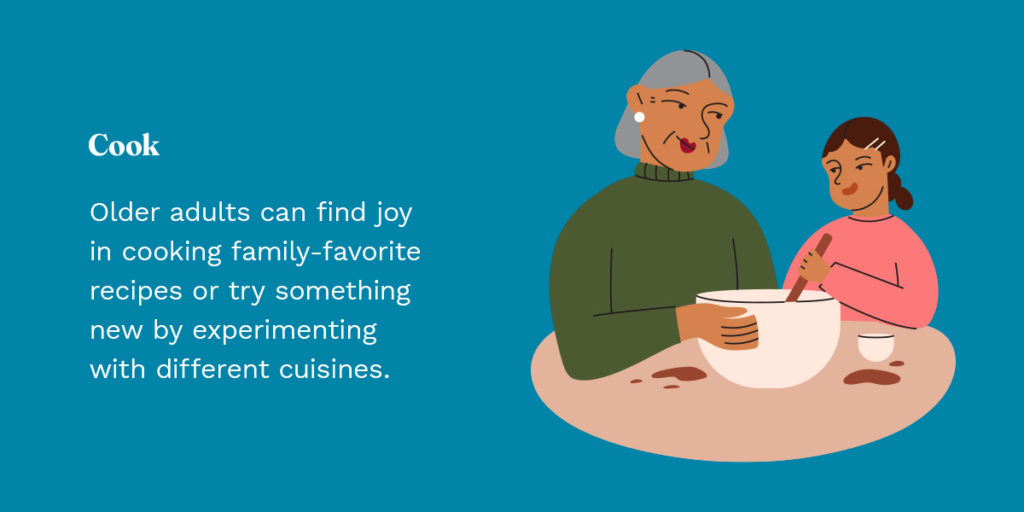
Cooking is an activity that older adults can do independently or with friends and family any time of year, but wintry weather makes getting in the kitchen and making nourishing meals all the more enjoyable.
Older adults can find joy in cooking family-favorite recipes or try something new by experimenting with different cuisines. Dishes like soups, stews and chili are perfect for warming up on cold winter days.
Cooking for oneself or others can be an empowering activity as well as a way to show love. Older adults can bond with younger generations by teaching them how to cook, or make it a group activity by having close friends or family over to enjoy the meal.
Engage in Low-Impact Exercise
It’s widely known that exercise does wonders for our physical and mental health, and the cold doesn’t have to stop older adults from reaping the benefits. Many low-impact movements can be done indoors, such as yoga, stretching and chair exercises.
Gentle resistance training, such as with bands or light weights, is a great way to keep older adults strong and active during winter months. Daily sessions of 30 to 60 minutes can help older adults experience positive results, including:
- Strengthened bones and muscles
- Reduced risk of chronic disease
- Enhanced cognitive function
- Improved mental health
Outdoor Winter Activities for Older Adults
Getting outdoors to enjoy fresh air and nature can be a wonderful way for older adults to explore the world, stay active and nurture relationships. Staying safe and warm outside during winter simply requires a bit of planning and precautionary measures. The winter months offer the following unique outdoor opportunities.
Visit Holiday Attractions
Holiday attractions are a great opportunity to gather the family and do something fun and festive. Following are a few ideas for holiday attractions and events:
- Christmas tree farms
- Holiday markets
- Holiday light tours
- Caroling
- Church services
Have a Snow Day
Snow days don’t mean older adults have to stay cooped up inside. There are many ways to get outdoors and relish in the pristine beauty of a snowy landscape:
- Go for a stroll: Older adults can take in the quiet charm of a snow day with a gentle walk on a cleared sidewalk. Warm clothing, a hat, gloves and shoes suitable for snow can help keep them safe from falls and low temperatures.
- Build a snowman: Building a snowman can be a joyful and nostalgic activity, especially when children join. Older adults can actively participate by decorating the snowmen or find a comfortable seat and supervise the fun.
- Watch the birds: Snow provides the perfect backdrop to watch winter birds as they explore their surroundings and hunt for food.
Staying Safe and Warm Outdoors
It’s essential for older adults to properly prepare themselves before spending time outdoors in the winter. Older adults can become sick if they get too cold.
Aging bodies don’t retain heat as well as they once did. Furthermore, physical changes due to aging can blunt an older adult’s awareness of the cold, so they may not realize they’re getting chilly until the situation has escalated. Hypothermia can occur if body temperature drops below 95 degrees, leaving older adults at risk of many serious health problems.
Caregivers can help older adults avoid hypothermia by implementing a few tips and tricks before they head outdoors:
- Bundle up in loose layers of clothing: The air between the layers can help keep heat close to the body.
- Add a scarf and hat: An exposed head and neck can be major sources of body heat loss.
- Don’t stay out in the cold for extended periods: Outdoor activities should be kept brief to ensure older adults’ safety.
- Wear waterproof shoes in snowy or wet weather: Feet are at risk of hypothermia if they become wet in the cold.
Live Gracefully With Corewood Care
At Corewood Care, we understand the importance of staying physically and mentally active in the later years of life, no matter the season. If you’re searching for things to do in the winter with elderly parents or friends, our companion care can help keep them active and entertained.
Corewood Care’s aging life care experts meet older adults where they are, whether at home, in the hospital, in an older adult community or elsewhere, to assist with daily activities, provide guidance, manage health and much more.
Let the older adults in your life thrive and live gracefully with Corewood Care. Reach out to us today.
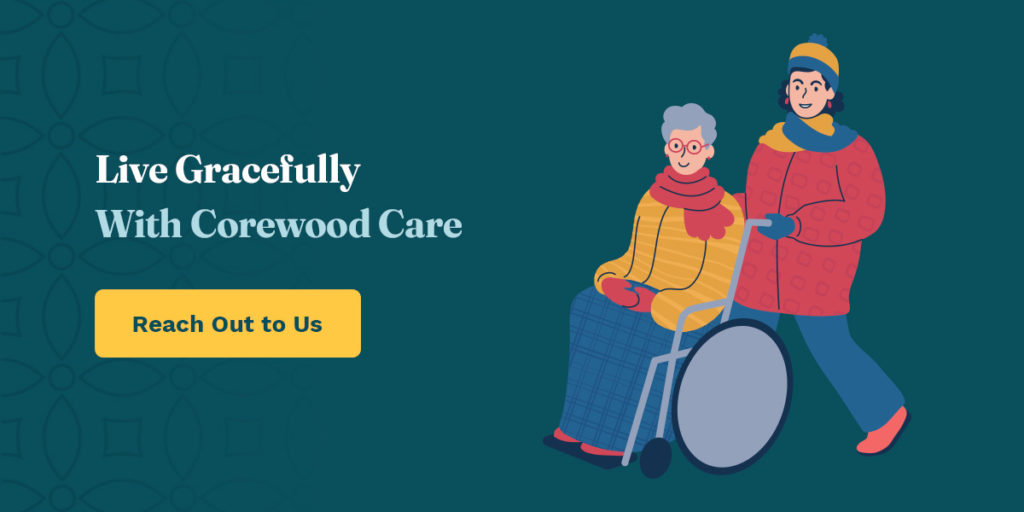


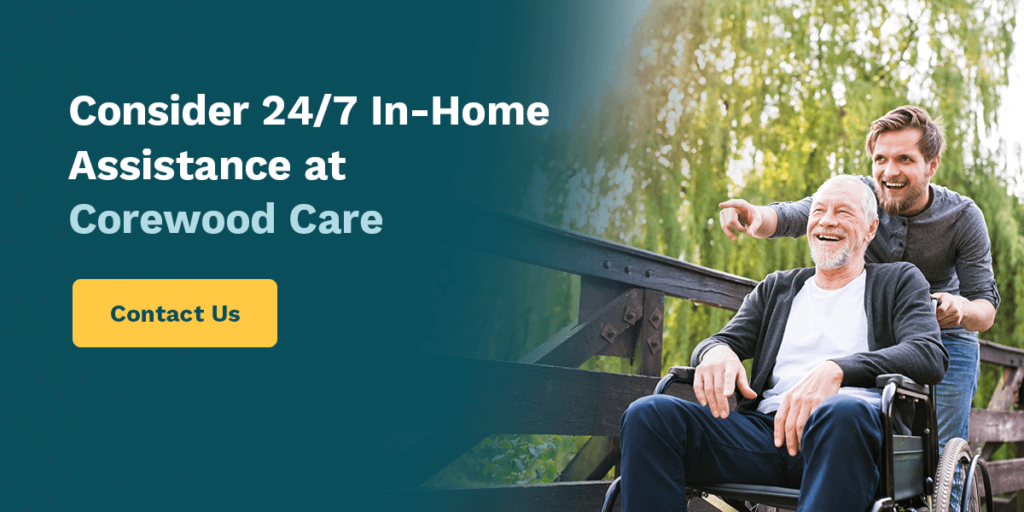
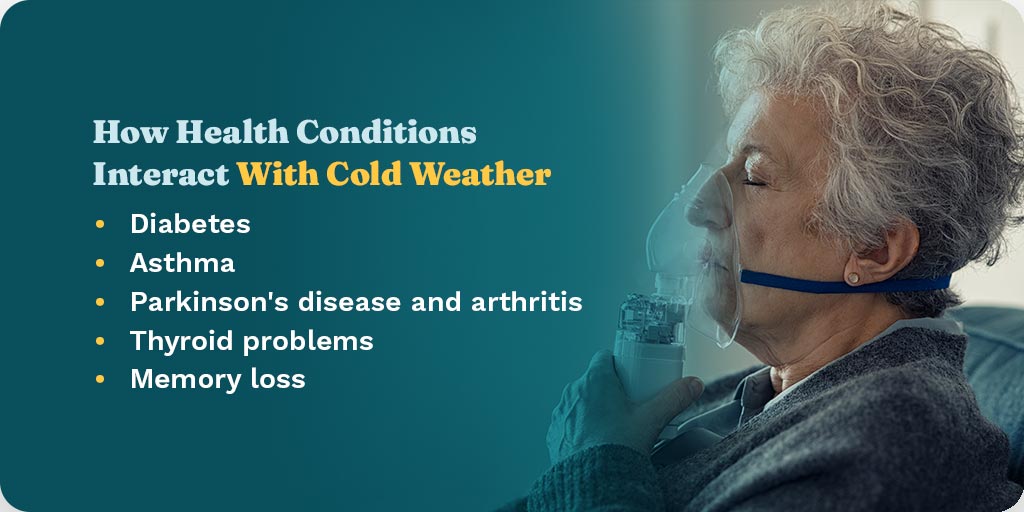


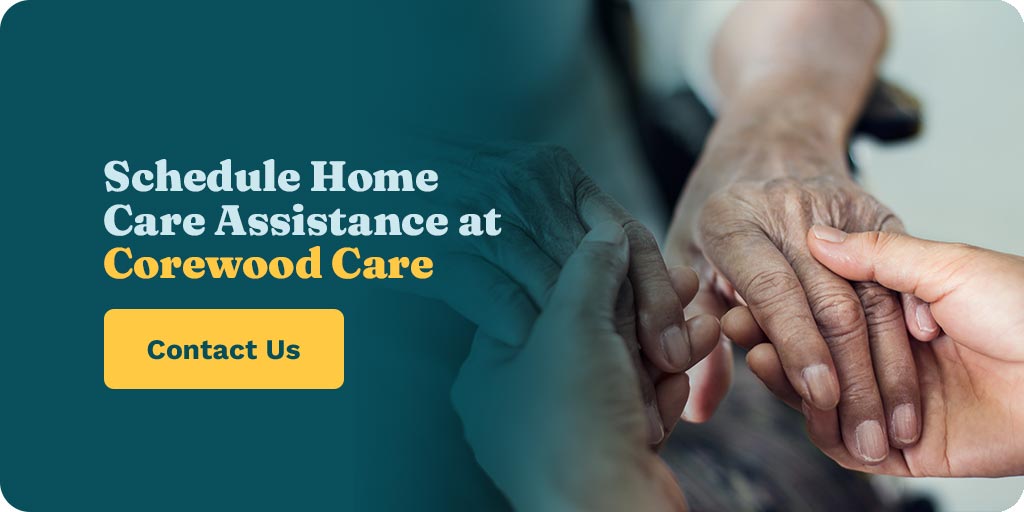









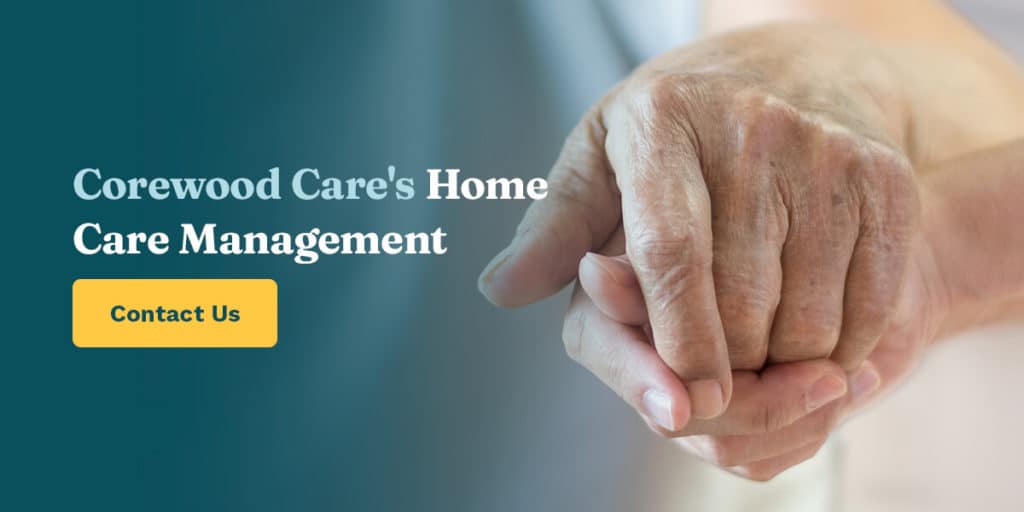







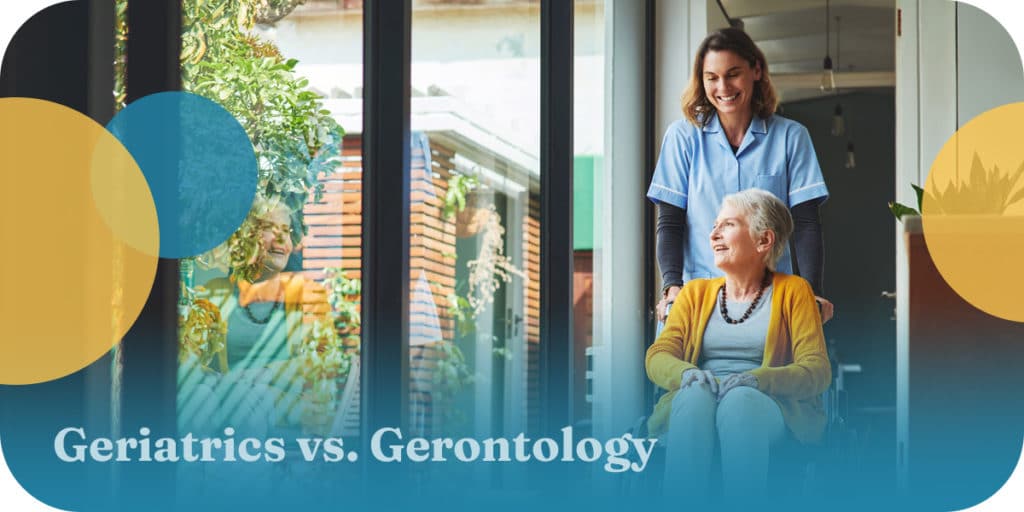

Recent Comments